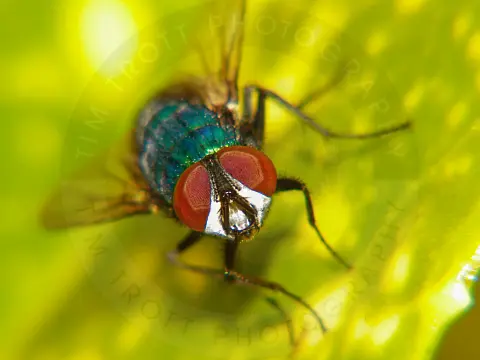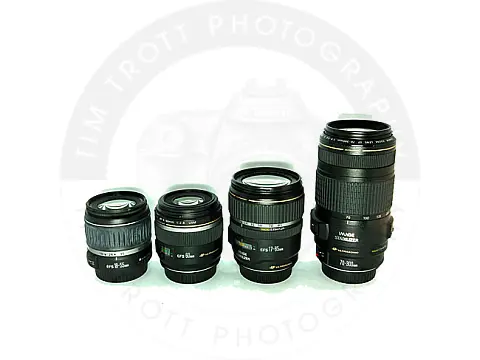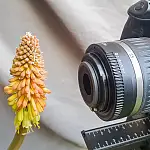Aperture and Depth of Field in Photography ExplainedOne of the three cornerstones of exposure, aperture allows us to balance exposure and depth of field. Find out how to master aperture and make your subjects stand out.
This article is part of a series of articles. Please use the links below to navigate between the articles.
- Introduction to Photography Course - Definition & Types of Photography
- How Cameras Work and Terminology Explained for Beginners
- What is the Exposure Triangle and How Does It Affects Exposure?
- Understanding Camera Shutter Speed for Beginners
- Aperture and Depth of Field in Photography Explained
- What is Digital Photography ISO and Grain?
- How to Understand Camera Lenses and Focal Length
- Essential Photography Composition Rules To Improve Your Photos
- Camera Metering Modes Demystified - Which One To Use
- Camera Shooting and Exposure Modes Explained
- Complete Guide to Flash Photography for Beginners
- When and How To Use A Camera Tripod In Photography
- What Are White Balance And Colour Temperature Camera Settings?
- How to Use Camera Histograms in Photography for Perfect Exposure
- Master These 10 Camera Settings For Your Best Photographs
- Why You Should Be Shooting in RAW - Reasons and Benefits Explained
- Essential Photo Editing Techniques to Enhance Photographs
- Complete Guide to Macro Photography for Beginners
- Beginners Landscape Photography Guide for Stunning Photos
What is Aperture in Photography?
An aperture is simply a hole in the lens - a variable diaphragm which can be made larger or smaller to control how much light reaches the sensor. You can control the aperture size using the dial on your DSLR, or it can be set automatically by the camera.

Think of the aperture as being the pupil in your eyes. As you move between bright and dark environments, the iris expands or shrinks controlling the size of your pupil. In photography, the "pupil" of your lens is called your aperture. You can shrink or enlarge the size of the aperture to allow more or less light to reach your camera sensor.
How is Aperture Measured and What are f Numbers?
Aperture is measured in f stops or f-numbers and the numbers represent the ratio between the focal length of the lens and the diameter of the aperture. These f-numbers are typically written as f/2.8 or f/22. A lens is said to be "wide open" when the aperture is at its largest, which is the lowest f-number the lens is capable of. On average this is around f/5. A "closed" lens would be at the smallest possible aperture, typically around f/32 and lets in the smallest possible amount of light.
The relationship between the numbers on the f-stop scale can be hard to grasp. Generally, f/4 is twice as large as f/8, which is twice as large as f/16. Each f-stop increment halves the amount of light reaching the sensor, meaning you have to double the shutter speed to compensate. The image below shows how the f-number affects the aperture.

What is Depth of Field?
Depth of Field is all about how much of the shot you are taking is in focus. Set the right combination of aperture, focal length and shutter speed and you'll notice an immediate difference in your photography.
Depth of field is the range of distance from the focal plane, which is acceptably sharp. Factors affecting the depth of field are the camera and lens type, aperture and focus distance.
Depth of field is not an abrupt change, but a smooth gradual transition between sharp and blurry. You can see this in the photograph below. Everything in front or behind the focus plane begins to lose sharpness, even if it is not detectable by the camera or our eyes.

In another example, we can see how the depth of field can be used to isolate your subject from the background.
The image on the left is largely in focus, whereas the image on the right has only the subject clearly in focus. In the image on the right, nearly everything in front and behind the subject is blurry and out of focus. This is why this effect is known as depth of field, as it relates to how "deep" the plane of focus is.
The depth of field should not be confused with Depth of Focus. The depth of Focus, or Focal Spread, describes the distance over which light is focused at the camera's sensor, as opposed to how much of the subject is in focus. It is important because it sets tolerances on how to level the camera's sensor has to be to capture proper focus in all regions of the image.
How Does Aperture Effect Depth of Field?
Aperture and focal distance are the two main factors affecting the depth of field. As a general rule depth of field is directly controlled by the size of the aperture. More depth of field (more objects in focus) can be achieved by having a smaller hole (high f-stop number), and less depth of field is achieved with a larger hole (low f-stop number).
- Larger Apertures (smaller f-stop numbers e.g. f/2.8) will result in small DoF (blurry backgrounds).
- Close focal distance will result in small DoF e.g. Macro.
- Smaller Apertures (larger f-stop numbers e.g. f/32) will result in a large DoF (sharp backgrounds).
- Large focal distance will result in large DoF e.g. Wide-angle.
By adjusting the depth of field you will also need to adjust shutter speed or ISO. Increasing the aperture will allow too much light through, and you end up with a photo that is just washed out whiteness, adjusting it to a narrow aperture will result in too little light and the image will be too dark. This relationship is described as the Exposure Triangle.
Aperture and Depth of Field Chart
Here is a table which shows the main relationship between aperture and depth of field.
| Aperture Size | Exposure | Depth of Field | |
|---|---|---|---|
| f/1.4 | Very large | Lets in a lot of light | Very thin |
| f/2.0 | Large | Half as much light as f/1.4 | Thin |
| f/2.8 | Large | Half as much light as f/2 | Thin |
| f/4.0 | Moderate | Half as much light as f/2.8 | Moderately thin |
| f/5.6 | Moderate | Half as much light as f/4 | Moderate |
| f/8.0 | Moderate | Half as much light as f/5.6 | Moderately large |
| f/11.0 | Small | Half as much light as f/8 | Large |
| f/16.0 | Small | Half as much light as f/11 | Large |
| f/22.0 | Very small | Half as much light as f/16 | Very large |
How to Change Aperture Settings
This is not something you can directly control on much cheaper point-and-shoot cameras, but as you move to more expensive options you will find that you can control these options more fully. SLR cameras, for example, will let you have full control over the aperture settings.
If you have an SLR, you should be able to set the camera to "Av" mode, which allows you to set the aperture manually, and the camera will set the shutter speed according to the amount of available light. If you play around with this, you will see how changing the aperture will change the shutter speed, and the results will be images with differing depths of field.
A Note about Depth of Field vs Focus
The most common problem you can run into when shooting with a wide-open aperture is the focus. When your aperture is open wide, the focal plane is at its smallest. This makes properly focusing next to impossible. When shooting with a 50mm or 85mm focal length and at f/1.4, getting the correct focus is almost impossible because everything has to fall perfectly into place for the image to have the proper focus.
When to Use Depth of Field in Photography
The depth of field is a real tool to master as a photographer. It allows you to isolate your subject from the background and is particularly useful for portrait and wildlife photography.

When you are taking a picture where you only want your subject to be in focus, you would choose a higher shutter speed and a lower aperture.
You can see in the animation below how the variation in aperture changes how much of the scene is in focus. The larger the f-number the more of the scene is focused, while with lower f-numbers only the chess pieces focused on are in focus.
What is the Bokeh Effect?
Bokeh is the effect of a soft out-of-focus background that you get when shooting a subject, using a fast lens, at the widest aperture, such as f/2.8 or wider. Bokeh is the pleasing or aesthetic quality of the out-of-focus blur in a photograph that you get as a result of the depth of field.
To achieve bokeh in an image, you need to use a fast lens - the faster the better. You'll want to use a lens with at least an f/2.8 aperture, with faster apertures of f/2, f/1.8 or f/1.4 being ideal.
You should shoot with the lens wide open, so use a shooting mode of Aperture Priority or Manual. The manual mode gives you the ability to choose both your aperture and shutter speed, whereas Aperture Priority allows you to choose the f/stop while the camera chooses the appropriate shutter speed for the exposure. You can also increase the distance between your subject and the background.
Depth of Field Example Video
In this video, we can see how changes in aperture from wide open (f/2.8) to closed (f/32) affect the depth of field in the classic game of chess photograph. You can see how more of the chess pieces become in focus as the aperture decreases (higher f-numbers).
Creative Uses of Depth of Field
A shallow depth of field can help to draw attention to the area of the photo that is in sharp focus. By shooting "wide open" using a fast (or wide) aperture, distracting foreground and background elements can become soft blurs that no longer divert attention away from the subject of your photo. An aperture of f/2.8 will produce an image with a very shallow depth of field, meaning that everything behind or in front of your focal point will be blurred, which is great for portraits.
On the other hand, a wide depth of field or a narrow aperture, f/22 for example, will maximise the depth of field which is ideal for landscapes.
Depth of field also varies depending on the focal length of your lens and how close you are to your subject. The longer the lens and the closer you are to your subject, the shallower the depth of field at any given aperture.













